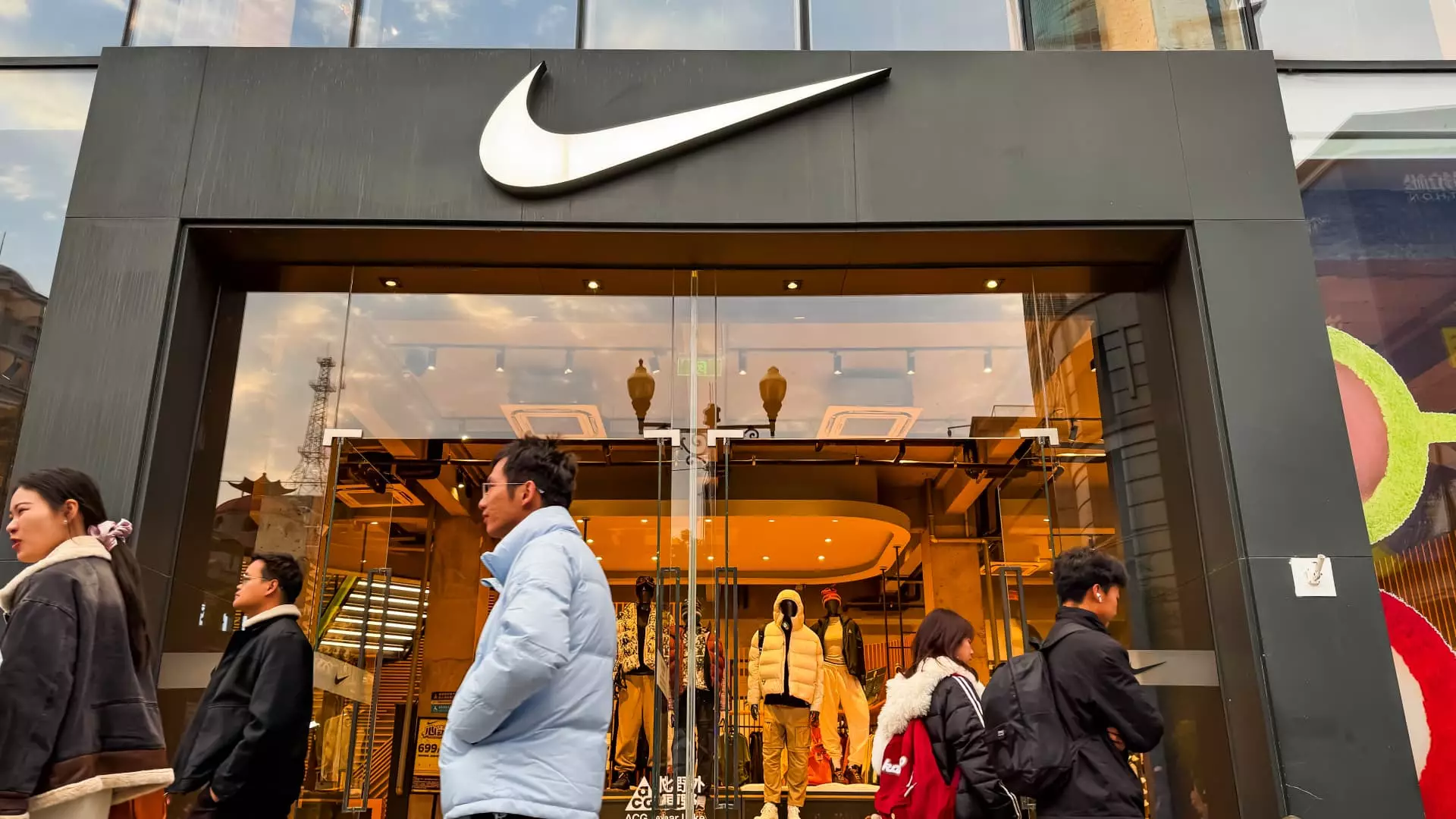Nike, the titan of the sneaker industry, finds itself ensnared in a web of challenges that portend a turbulent financial future. Recently, the company issued a dire warning of a potential double-digit drop in sales over the upcoming quarter. This bleak forecast, attributed to a sluggish turnaround strategy, unexpectedly severe tariffs, and shifting consumer sentiments, marks a precarious juncture for a brand that has long been synonymous with athletic excellence and cultural relevance. With its finance chief, Matt Friend, vocalizing concerns over expected declines in revenue and gross margins, it’s clear that the stakes have never been higher for this industry behemoth.
The recent report indicates that Nike anticipates its sales slump during the fourth fiscal quarter to rest within the “low end” of a “mid-teens” range, a significant departure from Wall Street’s expectations of an 11.4% decline. Such stark contrasts between predictions and reality not only spell trouble but also erode investor confidence, evident by a more-than-4% drop in share prices following the announcement.
Stiff Competition and Consumer Discontent
The factors contributing to this alarming forecast are multifaceted. Among them, weakening consumer confidence and volatile external economic pressures are taking center stage. As inflationary pressures grip many households and geopolitical tensions ebb and flow, consumers are showing a pronounced hesitation to spend on discretionary goods. This is particularly crucial for a company like Nike, which relies heavily on consumers’ willingness to invest in lifestyle products. With 24% of its manufacturing dependent on Chinese suppliers, the imposition of a new 20% tariff by the U.S. government only adds fuel to the fire. The economic landscape suggests that spending on new shoes and apparel is typically one of the first areas consumers cut back on when tightening their budgets.
In this climate, Nike’s recent dips in sales—especially the staggering 17% decline experienced in one of its most critical markets, China—indicate that the company is not only losing ground but also faces competitive pressures that are intensifying. The once unassailable dominance that Nike enjoyed is now in jeopardy as newer, agile brands nudge their way into the market, targeting consumers who are increasingly distracted by alternatives that resonate more deeply with their personal values.
Profitability Challenges Amid Turnaround Strategies
Despite the turbulent backdrop, Nike has managed to beat expectations during its previous quarter, albeit with a 32% year-over-year decline in profits. The slight uptick in earnings per share combined with a revenue margin of $11.27 billion is encouraging, yet it masks underlying challenges. A decline in gross margin by 3.3 percentage points highlights the costs associated with unloading unsold inventory—an effort that, although necessary, detracts from profitability in the short term.
On the operational front, CEO Elliott Hill’s strategic shift to revitalize the brand by collaborating with meaningful partners and innovating product lines is commendable. Collaborations such as the partnership with Kim Kardashian’s Skims may capture a burgeoning market segment. However, until these strategies translate into tangible growth, the company remains mired in a critical phase characterized by uncertainty.
The Importance of Innovation and Market Confidence
For Nike, the path to redemption lies in its ability to revitalize its innovation engine and launch products that not only meet but exceed consumer expectations. The urgency for new offerings is palpable, as analysts caution that a failure in this regard could jeopardize their market leadership position. Interestingly, shifting the narrative toward female athletes is a smart move—one that aligns with changing consumer preferences. After all, empowering women in sports and fashion is no small feat; it’s a strategy that acknowledges the potential of a previously underappreciated demographic.
The company’s new advertising campaign targeting female athletes represents a strategic reorientation that could bolster confidence and consumer interest. However, this step must be augmented by actual product innovations that can echo the same level of excitement seen in past releases. If Nike fails to deliver products that captivate the market, the current headwinds of tariffs and economic concerns will only amplify, turning what could be a minor setback into a long-term hurdle.
Confronting an Uncertain Future
The landscape ahead looks tumultuous for Nike, with predictions falling into a spectrum of pessimism. The company’s reliance on timely innovations, coupled with an ability to reclaim consumer interest amidst macroeconomic turbulence, will be paramount. While the challenges are substantial, it’s worth noting that Nike has exhibited resilience in the past. Still, the current environment compels a sober acknowledgment that turnaround attempts may be longer and more convoluted than anticipated. The eyes of investors and consumers alike remain keenly fixed on both how Nike tackles its immediate operational challenges and how it plots its course through this daunting chapter.

